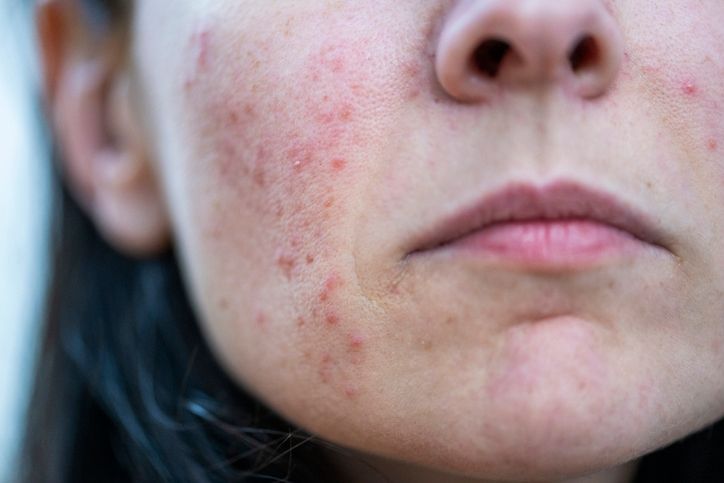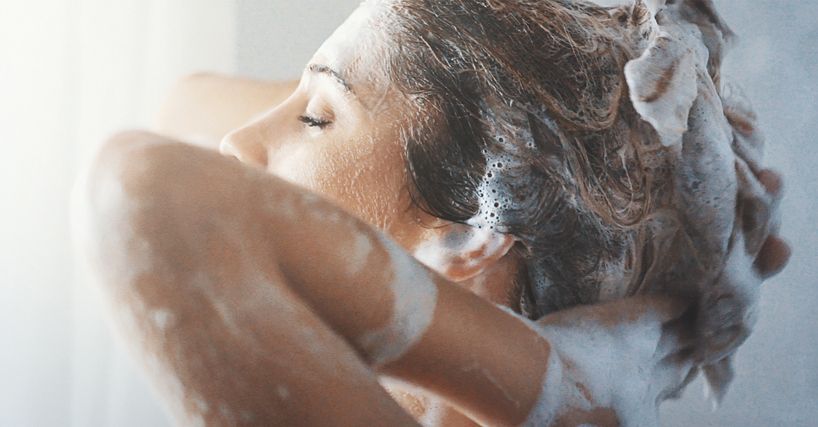Author: Natalie Ng|Updated: 29 April 2025
Dealing with dark spots or uneven skin tone? You’re not the only one. Discoloration is super common and can show up for a bunch of reasons—like acne scars, sun damage, or leftover dead skin cells. The right skincare routine can help a lot. It’s about keeping your skin clean, protecting it from the sun, and using a few key ingredients that support healthy skin and smooth out tone over time. Whether you have oily skin, dry patches, or sensitive skin, building a simple routine that fits your skin type and targets your specific skin concerns makes a big difference. And yep, sunscreen is non-negotiable. Want clear, even-toned skin without making things complicated? Keep reading—we’ll walk you through exactly how to build a skincare routine that works.

Different Types of Skin Discoloration
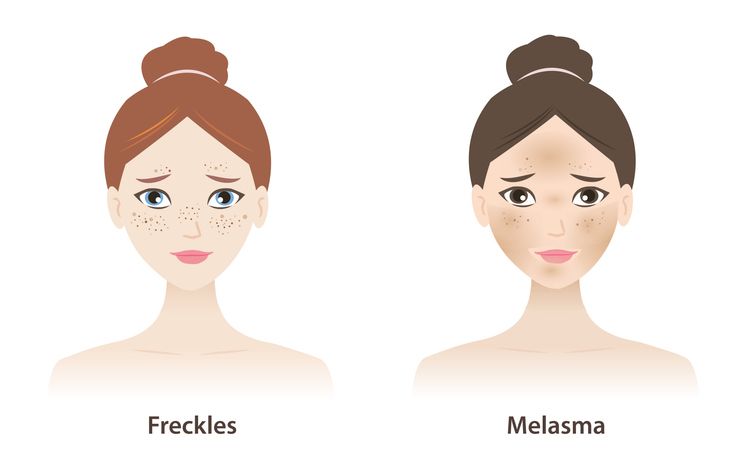
Not all skin discoloration is the same. Knowing the type you’re dealing with can help you choose the right skincare products and build a routine that actually works for your skin type and specific skin concerns.
Post-Inflammatory Hyperpigmentation (PIH)
PIH shows up as dark spots after your skin has been inflamed—like after breakouts, bug bites, or picking at acne. This is especially common if you have acne prone skin or sensitive skin. These marks aren’t permanent but can take time to fade, especially without the right skincare routine.
Melasma
Melasma causes larger, uneven patches of discoloration—usually brown or grayish. It often appears on the cheeks, forehead, or upper lip and is usually linked to hormonal changes, sun exposure, or pregnancy. A good skin care routine with sun protection is key here, especially if you're trying to prevent it from getting worse.
Sun Spots (Solar Lentigines)
These flat brown spots show up after long-term sun exposure. They’re more common with age and often appear on areas that get a lot of sun like the face, chest, or hands. Using broad spectrum sunscreen daily can help prevent new spots and protect your skin from further damage.
Freckles
Freckles are small, light brown spots that usually run in families. They get darker with sun exposure and are mostly harmless. If you want to keep your skin tone even, wear sunscreen every day to help control how visible they are.
Birthmarks
Some people have discoloration from birth. These can include port-wine stains or café-au-lait spots. Most don’t need treatment unless they’re causing discomfort or you want to address them for cosmetic reasons. A board certified dermatologist or licensed esthetician can guide you on options here.
Understanding what type of discoloration you have is a crucial step before building a skincare regimen. It helps you avoid using products that may irritate your skin or worsen the issue. The next step is learning how to treat each one with the right active ingredients and a simple routine that fits your particular skin type.

Key Ingredients That Target Dark Spots and Hyperpigmentation
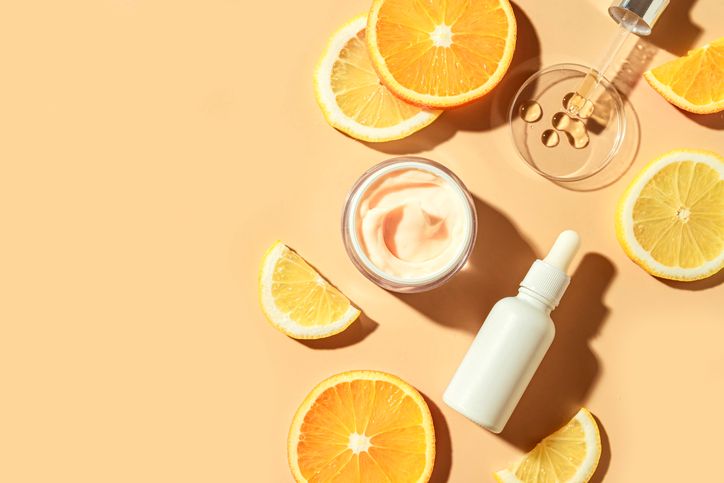
Certain ingredients are known to help fade dark spots and even out skin tone. If you’re dealing with hyperpigmentation, using the right skincare products with effective active ingredients can make a real difference—especially when matched to your skin type and specific skin concerns like oily skin, sensitive skin, or acne prone skin.
Vitamin C
Vitamin C is one of the most researched ingredients for brightening. It helps fade dark spots by blocking an enzyme called tyrosinase, which triggers melanin production. It also neutralizes free radicals caused by sun damage and environmental factors, which can make discoloration worse. A vitamin C serum in your morning routine keeps your skin fresh and helps protect your skin barrier.
Kojic Acid
Kojic acid is a natural ingredient made from fermented rice or mushrooms. It slows melanin production and provides gentle exfoliation to help remove dead skin cells. It’s a good option if your skin is sensitive to stronger ingredients. You’ll often find kojic acid in serums and brightening masks used in Korean skin care routines.
Niacinamide
Niacinamide (Vitamin B3) is a calming ingredient that helps reduce inflammation and controls the transfer of melanin to skin cells. It’s great for oily skin or acne prone skin because it also reduces excess sebum and supports the skin barrier. You can use it in both your morning and nighttime routine without irritation.
Alpha Arbutin
Alpha arbutin is a gentle but effective brightening agent. It works similarly to hydroquinone (a strong lightening agent), but it’s safer for long-term use and less likely to irritate sensitive skin. It slows down pigment production and is usually added to serums or moisturizers that target dark spots and uneven skin tone.
Choosing products with these ingredients can help support your skincare routine and target discoloration without overwhelming your skin. Each one plays a different role—so depending on your skin type and how your skin reacts, you might only need one or two. The next step is learning how to build a daily routine that uses them correctly and keeps your skin hydrated, protected, and balanced.
Read More
Book Now to Experience
PicoCure Pigmentation Removal Treatment
1 Minute Self-Registration
Date should not be before minimal date

Essential Steps in Your Daily Brightening Routine

A simple, consistent skincare routine makes a big difference when you're trying to fade dark spots and even out your skin tone. The goal is to remove dead skin cells, support healthy skin cell turnover, and protect your skin from further damage—without irritating your skin barrier.
Morning Routine
1. Cleanser
Start with a gentle cleanser suited to your particular skin type. For oily skin or clogged pores, a gel or foam cleanser can help remove excess oil and acne causing bacteria. If you have dry skin or sensitive skin, use a cream-based or oil cleanser to avoid stripping your skin.
2. Vitamin C Serum
After cleansing, apply a vitamin C serum. It helps brighten skin, reduce the look of dark spots, and protect against damage from UV rays and environmental factors. It also helps keep your skin fresh and supports your skin barrier.
3. Targeted Treatment
If you're using a dark spot treatment with active ingredients like alpha arbutin or niacinamide, apply it directly to the discolored areas. These ingredients help regulate melanin production and smooth fine lines over time.
4. Moisturizer
Choose a lightweight moisturizer to keep your skin hydrated. Look for beneficial ingredients like hyaluronic acid if you have dry patches, or opt for non comedogenic formulas if you're acne prone.
5. Broad Spectrum Sunscreen (SPF 30 or Higher)
This is a crucial step. Sunscreen helps prevent further discoloration and protects the progress you're making with your routine. Reapply every 2 hours when outdoors.
Nighttime Routine
1. Double Cleanse
Start with an oil cleanser to break down sunscreen and oil based impurities, then follow with a water-based cleanser to remove leftover dirt and water based impurities. This step helps keep skin clean without damaging your skin barrier.
2. Exfoliate (2–3 Times a Week)
Use a gentle chemical exfoliant with AHA (like glycolic or lactic acid) or BHA (like salicylic acid) to remove dead skin and support cell turnover. This clears the way for other skincare products to absorb better and improves visible pores.
3. Brightening Serum
Apply your kojic acid, niacinamide, or alpha arbutin serum. These help fade dark spots, reduce inflammation, and prevent new discoloration from forming.
4. Retinol (Optional)
If your skin can handle it, retinol helps speed up cell turnover and smooth fine lines. Start slowly to avoid irritation—especially if you have sensitive skin.
5. Moisturizer
Finish with a moisturizer to lock in hydration and support overnight repair. Choose one with soothing and brightening ingredients to help your skin recover while you sleep.
Adjust this routine depending on your skin’s response. If you notice irritation or dryness, reduce the frequency of exfoliants or retinol. The goal is consistency—not perfection. Up next, we’ll look at how to prevent new dark spots with proper sun protection.

Sun Protection Strategies for Preventing Further Discoloration
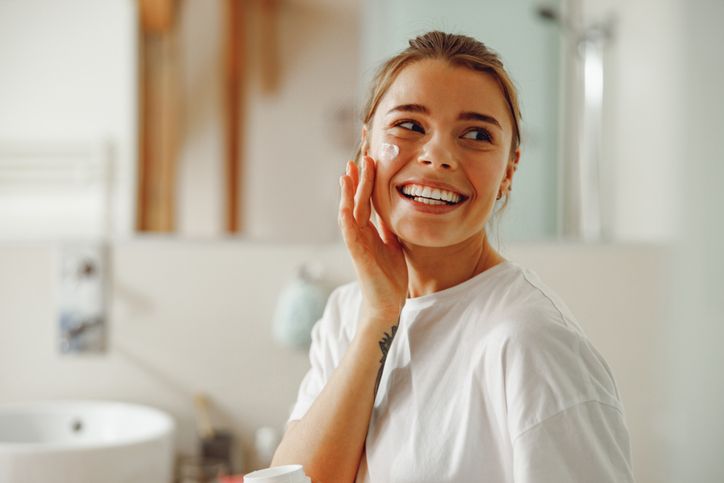
Sun exposure is one of the main reasons dark spots and uneven tone stick around—or keep coming back. Without daily protection, even the best skincare routine can’t keep discoloration away. That’s why sun protection isn’t just a nice extra—it’s a non-negotiable step for all skin types.
Use a Broad Spectrum Sunscreen Daily
Choose a broad spectrum sunscreen with SPF 30 or higher. It protects your skin from both UVA (aging) and UVB (burning) rays, which contribute to premature aging, dark spots, and skin cancer. Look for lightweight, non comedogenic formulas if you have oily skin or acne prone skin.
Apply sunscreen as the last step of your morning routine. Use enough to cover your entire face and any exposed areas. Don’t forget spots like your neck, chest, and ears.
Reapply Every Two Hours
Reapplication is key—especially if you're outdoors, sweating, or near windows. UV rays can still reach you through glass, even on cloudy days. Carry a travel-size sunscreen or a sunscreen stick to make reapplying easier throughout the day.
Wear Protective Clothing
Sunscreen helps, but it’s not your only defense. For extra protection:
• Wear wide-brimmed hats to shield your face
• Use UV-blocking sunglasses to protect the under eyes
• Choose UV-protective clothing with built-in SPF for outdoor activities
These steps are especially helpful if you’re dealing with stubborn discoloration or using active ingredients that make your skin more sensitive to sunlight.
Stay in the Shade When You Can
The sun’s rays are strongest between 10 a.m. and 4 p.m. If possible, stay indoors or in the shade during these hours. This small habit helps prevent further pigmentation and gives your skincare products a better chance to work.
Consistent sun protection keeps your skin healthy, prevents new dark spots, and supports everything else you're doing in your skincare routine. Next, we’ll cover the professional and at-home treatments that can help with more stubborn discoloration.
Book Now to Experience
PicoCure Pigmentation Removal Treatment
1 Minute Self-Registration
Date should not be before minimal date

Professional Treatments and At-Home Solutions

Some types of discoloration fade with a consistent skincare routine, but others—especially deeper or long-standing dark spots—might need extra help. Whether you’re exploring in-office procedures or want to upgrade your at-home routine, there are options that can fit your needs and skin type.
In-Clinic Treatments for Stubborn Discoloration
Seeing a licensed esthetician or board certified dermatologist gives you access to treatments that go beyond what skincare products can do at home.
1. Chemical Peels
These use acids to remove the top layers of skin, which helps fade dark spots and even out skin tone. They also boost cell turnover and help remove dead skin cells, which supports smoother, brighter skin. Peels come in different strengths—your provider will choose one based on your skin type and concerns.
2. Laser Treatments
Laser therapy targets melanin in the skin to break up discoloration. It's often used for sun spots, melasma, and post-acne hyperpigmentation. Results vary depending on your skin tone and how deep the pigmentation is.
3. Microdermabrasion
This is a gentle treatment that exfoliates the outer layer of skin. It helps remove dead skin and can smooth uneven texture, which may improve how dark spots look over time. It’s a good option for mild pigmentation and dull skin.
These procedures often need a series of sessions and should always be done by qualified professionals to avoid irritation or further damage—especially if you have sensitive skin.
Effective At-Home Options
You don’t need to visit a clinic to see improvement. Many skincare products can support a brightening routine from home—especially when used consistently.
1. Brightening Serums
Use products with ingredients like vitamin C, kojic acid, niacinamide, or alpha arbutin. These help fade spots, even tone, and repair skin without harsh side effects. Look for high concentration formulas, but start slow to avoid irritation.
2. Exfoliants
Chemical exfoliants like AHAs (glycolic or lactic acid) and BHAs (salicylic acid) help clear clogged pores, remove dead skin, and improve cell turnover. Use them 2–3 times a week based on how your skin reacts.
3. Retinol
Retinol encourages new skin cell growth and helps smooth fine lines while fading pigmentation. Start with a low concentration and apply it at night. Follow with moisturizer to avoid dryness or flaking.
4. Sheet Masks and Spot Treatments
Sheet masks can hydrate skin and deliver active ingredients directly. Spot treatments help you focus on stubborn areas without affecting the rest of your face.
Always patch test new products, especially if you have acne prone skin, dry skin, or sensitive skin. Introduce one product at a time and monitor how your skin responds. If irritation happens, reduce how often you use it or try a lower strength version.
Professional and at-home treatments can work together—especially if you stay consistent with your basic skincare routine and daily sun protection. These tools help you move closer to clear, even-toned skin without overwhelming your skin barrier or triggering more issues.

Adjusting Your Routine Based on Your Skin Type
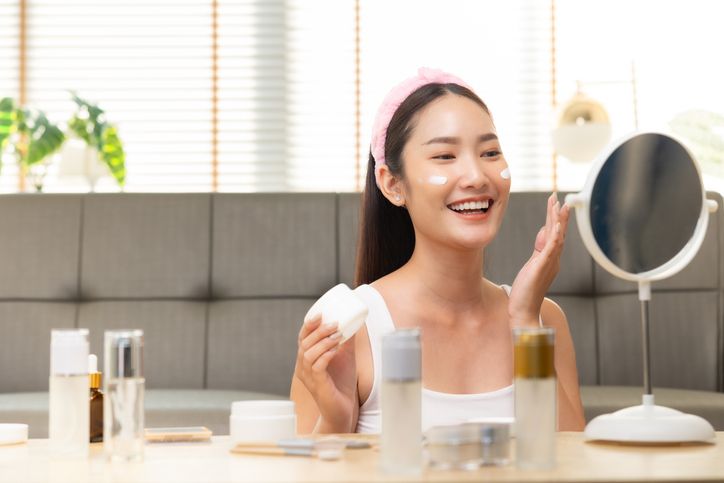
No two skin types are the same, and how your skin reacts to skincare products depends on factors like oil production, sensitivity, hydration levels, and how easily your pores get clogged. Understanding your particular skin type helps you choose ingredients and routines that treat discoloration without causing new skin concerns.
For Oily Skin
Oily skin often comes with clogged pores, excess sebum, and visible pores—especially in the T-zone. While this skin type is less prone to dry patches, it can still deal with dark spots left behind by acne.
• Use lightweight, water-based products and non comedogenic formulas to avoid breakouts
• Salicylic acid helps remove dead skin cells, unclog pores, and reduce excess oil
• Niacinamide is a good choice—it controls oil, calms inflammation, and helps fade dark spots
• Gel moisturizers and oil free sunscreens keep your skin hydrated without feeling greasy
Avoid thick creams and heavy oils that may trap acne causing bacteria or worsen hyperpigmentation.
For Dry Skin
Dry skin can have a compromised skin barrier, making it more prone to irritation from active ingredients. It often shows signs like flakiness, tightness, or rough texture.
• Use a gentle cleanser that doesn’t strip your skin
• Add hyaluronic acid to keep skin hydrated and prevent lost moisture
• Look for brightening ingredients like vitamin C and alpha arbutin in soothing, hydrating formulas
• Always follow treatments with a rich moisturizer to seal in hydration and support barrier repair
Avoid over-exfoliating, which can cause dry skin to react more to environmental factors and active ingredients.
For Sensitive Skin
Sensitive skin can sting, burn, or turn red when exposed to harsh products. This skin type needs extra care when using active ingredients to treat discoloration.
• Patch test every new product, especially exfoliants or retinol
• Start with lower concentrations of brightening ingredients and use them less often
• Niacinamide is usually well-tolerated and supports the skin barrier
• Stick to simple routines with fewer products to avoid irritation
Avoid fragranced products and harsh physical scrubs, which can trigger redness or dryness.
For Combination Skin
Combination skin means you’re dealing with both oily and dry areas—often an oily T-zone with dry cheeks.
• Use gentle cleansers that balance oil and hydration
• Treat oily areas with salicylic acid and lightweight serums
• Moisturize dry areas with richer creams or layer hydrating products
• Apply treatments like vitamin C or kojic acid all over, but spot-treat stronger actives only where needed
Tailor your routine based on how each part of your face behaves, rather than trying to treat your whole face the same way.

Boosting Your Skin Routine with PicoCure Pigmentation Removal Treatment
If you've been following a consistent skincare routine but still struggle with stubborn dark spots or uneven tone, a professional treatment can help take your results further. PicoCure Pigmentation Removal Treatment is a non-invasive laser option designed to target all layers of pigmentation—making it a strong addition to your long-term skincare regimen.
How PicoCure Supports Your Skin Care Routine
Even with the right skincare products—like vitamin C, niacinamide, or alpha arbutin—some pigmentation is harder to fade. This is especially true for deep melasma, long-term sun damage, or post-acne marks that resist over-the-counter solutions. That’s where PicoCure fits in. It works below the surface to support what your daily routine is already doing on top.
Adding a treatment like PicoCure to your skincare regimen can help you:
• Fade dark spots faster
• Even out your skin tone
• Boost skin health by encouraging collagen growth
• Improve the appearance of acne scars and large pores
PicoCure works for most skin types—including sensitive skin and darker skin tones—making it a great option if you’ve struggled to find safe treatments in the past.
How PicoCure Works
PicoCure uses a mix of picosecond and nanosecond laser pulses across four wavelengths (1064nm, 650nm, 585nm, 532nm). These laser beams travel quickly into the skin and break down pigmented areas into tiny particles. Your body naturally clears these through its metabolic process—no harsh peeling or damage involved.
The nanosecond laser targets deep pigmentation, while the picosecond laser breaks it down further, making removal more complete. The energy also stimulates collagen production, which helps firm skin and smooth fine lines.
Why PicoCure Makes a Difference
• Treats multiple pigmentation issues: Works on melasma, acne scars, sun spots, and uneven patches
• No recovery time: The laser doesn't damage surrounding skin, so you can get back to your day right after treatment
• Safe and comfortable: Most people feel only mild warmth—no pain or downtime
• Improves overall skin tone: Brightens dull areas, supports smoother texture, and reduces visible pores
• Prevents future spots: Clears existing pigmentation while targeting deeper melanin to reduce new spots from forming
What to Expect
Most people see visible improvement after a few sessions. A full course typically includes 6–8 sessions, depending on your skin type and how your skin responds. You can go back to your normal skincare routine right after treatment, just with some extra hydration and daily broad spectrum sunscreen to protect your results.
If you're already following a skincare routine for discoloration, PicoCure can enhance your progress and help you reach clearer, more even-toned skin faster.
Ready to fade stubborn pigmentation and get clearer, smoother skin?
Book your PicoCure Pigmentation Removal Treatment today and take your routine to the next level.
New Beauty's PicoCure Pigmentation Removal TreatmentBook Now to Experience
PicoCure Pigmentation Removal Treatment
1 Minute Self-Registration
Date should not be before minimal date
FAQ
Can Skin Discoloration Return After Successful Treatment?
Like a stubborn houseguest, skin discoloration can definitely make an unwanted return. You'll find that even after successful treatment, discoloration might reappear if you don't protect your skin from its triggers. Sun exposure, hormonal changes, and inflammation are common culprits that can bring those dark spots back. That's why it's essential to maintain your skin care routine and always use sun protection.
How Long Should I Wait Between Trying Different Brightening Products?
You'll want to wait at least 2-3 weeks between trying new brightening products to properly evaluate their effectiveness and avoid irritation. If you're using potent ingredients like vitamin C, retinol, or kojic acid, stick to one active ingredient at a time. Listen to your skin - if you notice any redness, burning, or sensitivity, take a break and give your skin time to adjust.
Will Drinking More Water Help Reduce Hyperpigmentation?
Did you know that 75% of your skin is made up of water? While staying hydrated won't directly fade hyperpigmentation, it's essential for your skin's overall health. Drinking enough water helps your body flush out toxins and keeps your skin plump and glowing. You'll need targeted treatments like vitamin C or kojic acid to actually tackle dark spots, but proper hydration will help your skin respond better to these treatments.
Can Certain Foods Worsen or Improve Skin Discoloration?
Your diet plays a significant role in skin health. Foods rich in antioxidants like berries, leafy greens, and sweet potatoes can help fight skin discoloration. You'll want to limit sugar, processed foods, and alcohol, as they can trigger inflammation and worsen hyperpigmentation. Try incorporating foods high in vitamin C, vitamin E, and zinc - they work together to support even skin tone and natural healing.
Is Skin Discoloration Treatment Different for Sensitive Skin Types?
If you have sensitive skin, you'll need a gentler approach to treating discoloration. Skip harsh ingredients like high-concentration hydroquinone and opt for milder alternatives like kojic acid, vitamin C, or licorice root extract. Start with lower concentrations and gradually increase them. Don't forget to patch test new products, and always use a broad-spectrum sunscreen since sensitive skin can react strongly to sun exposure.
Recommended Articles
COPYRIGHT© NEW BEAUTY MANAGEMENT LIMITED 2025. ALL RIGHT RESERVED.

